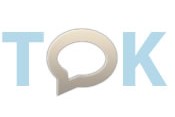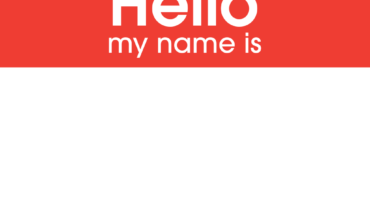
Introducing Tok, new way to share online conversations
For the past year We Media has been working with a startup on a difficult problem: how to improve the quality, experience and value of online conversations. Now we’re seeking a small group of web sites to try a new conversation tool with some novel and intriguing capabilities – including the ability to embed and network conversations (and audiences) across different sites and on Facebook. If you’d like to use it on your site, read on for more background – then contact me (andrew AT wemedia DOT com) – AN.
Got engagement? Need some?
Our client, an Israeli startup called Tok, has created a new kind of discussion tool for digital publishers. It isn’t a forum, chat or comment engine – it’s something brand new: a visual, structured conversation object designed to be embedded within content. It uses Facebook to network participants and extend their conversations across the social web.
Tok has been testing and improving the experience for the past several months. Now we’re seeking a small group of digital publishers to try it on a larger scale with their communities.
Tok is designed to help individuals get more out of their online discussions – and also help digital publishers better engage and extend their communities through conversations driven by their content.
Tok lets you embed a discussion simultaneously on many pages or sites – just like a Youtube video can be embedded anywhere. So a conversation becomes networked across communities and audiences (and also through Facebook). Unlike comment sections at the end of articles that vanish with the news cycle, a tok can unfold over time and in many places.
Here’s an example – this is live, you can log in, then vote, comment, like and share it with your Facebook friends:
You can see the same Tok on the Tok Facebook app.
And here:
https://wemedia.com/2012/11/06/lets-write-the-new-script-for-american-politics/
And here’s another example of Tok embedded in an article:
http://peacenow.org/entries/peace_now_activists_on_mahmoud_abbas_peace_overture#.UKOxpeOe-EY
The Facebook layer (and login) is important. For one thing, Facebook now dominates people’s online time, attention and conversations. The time people spend on Facebook dwarfs their time with news and information providers.
Facebook authentication also provides a strong mechanism to ensure discussion participants use real identities. This strengthens self-policing to cut down on spam and nasty comments.
I’m most intrigued by some big ideas and design innovations we’ve baked into Tok.
First, the potential to “re-patriate” conversations about news and current events with the brands that spark, inform and drive them. That’s not trivial. The business model for online news is precarious. If the businesses that produce journalism can create stronger connections with their communities and generate more traffic and revenue from the conversations that unfold from their content, that’s a step forward for the economics of news and journalism. It’s also a potential win for brands and campaigns that use conversation and social media interaction to inform and engage supporters.
Second, Tok attempts to connect conversations and communities that span multiple pages or sites – as well as Facebook. This could lead to richer conversations on smaller sites, because they can be networked with bigger sites; but it also could lead to a higher signal-to-noise ratio on all of the networked sites by collaboratively filtering and selecting the best and most shared threads and participants.
Finally – Tok imagines a new approach to publishing in which conversation is a new kind of story format, rather than simply an appendage slapped at the end of articles or alongside videos. Instead of thinking of conversation as secondary, Tok imagines articles as context – and conversation about what’s going on in the world as the principal objective of audiences, rather than the consequence and afterthought. This leads to new thinking about story formats, headlines and other elements of publishing.
For now, you can see the beginnings of this new approach: Tok’s “headlines” are questions. A survey mechanism enables color-coding of participants for a faster visual cue to sentiment – and allows participants to sort responses for more efficient browsing.
Next Steps
We’re putting together a group of news and current affairs web sites, blogs, brands, non-profits and causes that want to experiment with curating and expanding conversation within their online communities. There’s no cost to the pilot partners – and mutual learning about the value of curating and driving conversation to improve engagement, traffic and social sharing.
Along with a strong online brand and audience, if you’d like to use Tok with your community you’ll need to be nimble enough to implement something quickly. The technology is simple – it uses an embed code like a Youtube video. But you will need to designate an editor, social media or community manager to lead, launch and promote conversations through your platforms and communities.
If you’re interested in using Tok on your site, contact me (andrew AT wemedia dot com). I can arrange a more formal demo and introduction to the app and how it works.




